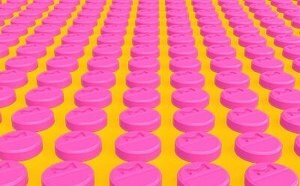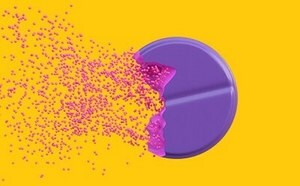Solid Formulation Strategies
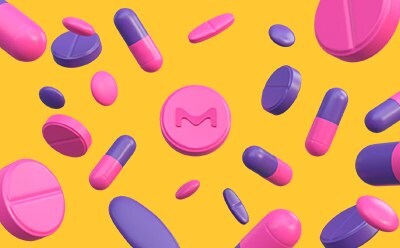
Solid formulation is well-established in the pharmaceutical industry and there are many standard processes and methods, as well as a variety of formulations and dosage types. Challenges such as poor solubility, specific needs of a defined target population, and an evolving regulatory environment persist, requiring innovative problem-solving strategies.
This page provides an overview of common challenges in solid formulation of small molecules, highlighting effective and tailor-made solutions specifically developed to overcome critical obstacles in drug development.
Formulating solid dosage forms can be quite challenging and complex. On the way to the final formulation, there are many obstacles to overcome, whether it is API stability, bioavailability, or release kinetics that have to be optimized, just to name a few. Finding a trusted partner with application and regulatory expertise that supports you in identifying the best approach for your specific API can make a difference – helping you to reduce efforts, accelerate development time, and ultimately, bring your drug development project to success.
Featured Categories
Our comprehensive portfolio of high-quality raw materials and functionalized excipients helps you meet the challenges of solid formulation pharmaceutical manufacturing, backed by regulatory support for simplified supplier qualification, accelerated processes, and reduced total cost of ownership.
High-quality API processing chemicals to enhance API solubility with salt formation, co-crystal formation, polymorph screening, and nano-milling.
A comprehensive range of functional excipients, facilitating high tablet hardness at low compression forces, short disintegration times as well as high and low API dosages, targeting direct compression, granulation and tablet coatings.
Innovative excipients supporting a variety of solubility enhancement approaches to improve API solubility through formulation including hot melt extrusion, spray drying, dissolution enhancers, inorganic drug carriers.


Next Generation Pharmaceutical Manufacturing: 3D Printing and Other Emerging Trends
Pharmaceutical development and manufacturing are moving away from the concept of “blockbuster drugs” and toward addressing the needs of very defined patient populations. At the same time, process efficiency and process economics are now more important than ever. New technologies are on the rise and offer new opportunities and the potential to disrupt traditional pharmaceutical manufacturing concepts.
- 3D printing is an attractive technology that enables personalization and on-demand manufacture, flexibility in release performance and final dosage form, digitalization, and automated formulation.
- Characteristics of the API can have an impact on the performance of the manufacturing process and final formulation. Particle homogenization platform technologies can be used to address unstable polymorphs, and improve API flowability, compressibility, and particle homogeneity to enable reliable formulation and more efficient tableting processes.
- While traditional batch manufacturing is very established in the pharmaceutical industry, it has several drawbacks which result in a limited process efficiency. In times where speed and process economics are key, continuous manufacturing can be a more efficient approach to solid dose manufacturing.
- Our new AI-based tool screens a broad chemical space to predict optimal co-formers for co-crystallization of your API thus promoting faster drug development.

Considerations for Safe and Effective Tablet Film Coatings
Tablet coatings play an important role in solid dose formulation as they offer numerous benefits. They improve appearance, mask unpleasant colors or tastes, differentiate from other drug products, protect the tablet core from moisture, modify the release behavior, and improve swallowability. The development of a coating formulation and a process to ensure optimal performance requires substantial expertise. Also, the selection of the coating components is a critical step and material-specific properties have to be taken into consideration, as well as recent regulatory developments.
- Coating the solid dosage form is a highly efficient approach for protecting the API from environmental effects and enhancing its appearance at the same time. Polyvinyl alcohol as a film-forming polymer, for example, provides an effective oxygen and moisture barrier enabling a good stability of the drug formulation.
- Titanium dioxide (TiO2) is widely used as a colorant in tablet coatings, and a uniform white appearance across batches improves not only aesthetics, but also patient compliance. Toxicological concerns about nanoparticulate titanium dioxide and its ban from use in foods and nutritional supplements in the European Union have led to an interest in suitable alternatives for use in drug products. Viable alternatives to titanium dioxide have been developed to enable increased opacity in film coatings helping to mitigate regulatory risks in the future.
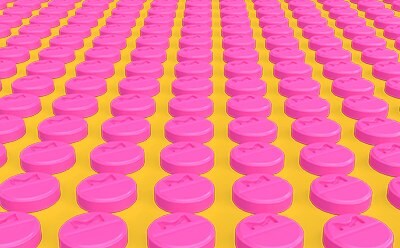
Increasing Flexibility in Classical Solid Manufacturing
Despite being one of the most widely used oral solid dosage forms, formulation of compressed tablets can be challenging, and several manufacturing approaches can be used. Formulators benefit from greater flexibility when selecting the best technology during formulation development for their specific API and final formulation requirements. Learn about the common techniques for tablet manufacturing direct compression, wet granulation, and dry granulation, and their respective benefits and drawbacks.
- The advantageous physicochemical characteristics of particle-engineered mannitol filler excipients enable broad flexibility in manufacturing processes, even for more challenging solid dose formulations such as low and high dose and micronized APIs.
- Tableting performance in dry granulation processes is strongly dependent on the excipient type used. A number of commercially available mannitol options are suitable for dry granulation, including spray-dried, granulated, and crystalline mannitol grades. Explore the range of mannitol types and case studies describing how they differ.
- Direct compression is a time-saving process with fewer steps compared to wet granulation and is also well suited for sensitive APIs. Use of functional excipients helps to overcome potential limitations of direct compression associated with particle size differences and high/low dose levels, which could otherwise result in de-mixing and impact content uniformity.
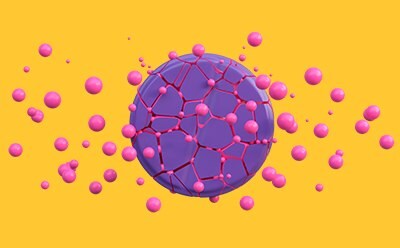
Enhancing API solubility
Solubility enhancement is a key challenge in pharmaceutical formulation development, as an increasing number of APIs in the development pipeline are poorly water-soluble. A range of approaches are available to enhance solubility which have to be evaluated depending on the API and specific formulation requirements as there is no one-size-fits-all solution for poorly water-soluble APIs. Strategies for solubility enhancement are typically based on the classification of the API according to the Biopharmaceutics Classification System (BCS), or the more recent Developability Classification System (DCS), resulting in a tailored approach for the individual API.
- The physicochemical properties of solid form APIs can be modified and enhanced using different API processing methods including salt formation, co-crystals, and nano-milling. These approaches can enhance many API properties including solubility, processability, physical and chemical stability, and safety.
- Oral formulations require API solubility for sufficient absorption in the body. If the API is not appropriately dissolved in the gastrointestinal tract, it cannot enter the systemic circulation and the intended physiological effect will not be realized. A variety of approaches can be used for solubility enhancement through formulation including different solid dispersion technologies.
- In hot melt extrusion (HME), a solid dispersion of the API in a polymeric drug carrier is formed through mixing and melting inside the heated extruder barrel.
- Inorganic drug carriers such as mesoporous silica can be used to form a solid dispersion by adsorbing the API, typically in its better soluble amorphous state.
- Spray drying creates a solid dispersion through rapid solvent evaporation of an API solution.
- Dissolution enhancers can be used to improve performance of dissolution-rate limited APIs.
- Replacing hydrophobic excipients with hydrophilic excipients is another approach to improve solubility and dissolution performance of a formulation.
- In addition to its application as a counter ion in salts, meglumine can also be used as a functional excipient to enhance API solubility, improve API stability, and adjust pH value.
- In hot melt extrusion (HME), a solid dispersion of the API in a polymeric drug carrier is formed through mixing and melting inside the heated extruder barrel.

Improving API Stability Through Formulation
Many factors in a drug formulation can have a negative effect on the stability of the API. Reduced API stability can result in reduced shelf life, reduced efficacy, or in the worst-case scenario, cause harm to a patient. There are several considerations that must be taken into account when developing a formulation or when dealing with instabilities: Is the API sensitive to environmental factors such as light, heat, or humidity? Is the API prone to instabilities induced by common excipient impurities such as peroxides or reducing sugars? Is the API incompatible with selected formulation methods?
- Use of the right excipients for tablet cores, capsules, and sachets can help protect APIs from browning due to reducing sugars and peroxide impurities, heat- or moisture-induced instabilities during the granulation process, and instabilities promoted by hygroscopic formulation components.

Controlling Sustained Drug Release
Controlled release of oral solid formulations ensures alignment of drug performance and therapeutic need. The benefits of sustained release include reduced dose frequency, greater patient convenience, and increased compliance. In many cases, long-acting efficacy of the API is required. When selecting excipients for sustained-release formulations, drug manufacturers require options that deliver superior reliability and consistency with release kinetics unaffected by outer conditions such as pH value.
- Matrix systems are widely used to control drug release due to their simple formulation process. In contrast to rate-controlling coating layers, a matrix formulation generally has a reduced risk of dose dumping and related side effects. A new sustained release excipient based on polyvinyl alcohol (PVA) with optimized particle size and properties provides consistent, sustained drug delivery over long periods and is well suited for direct compression processes due to its good compressibility. The fully synthetic nature allows for tight control of properties and reliable batch-to-batch performance, supporting Quality by Design (QbD) approaches.
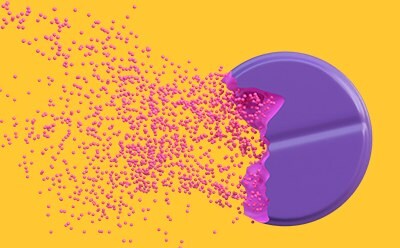
Accelerating Disintegration Without Impairing Robustness of Orally Disintegrating Tablets
Orally disintegrating tablets (ODT) offer convenience and speed. These tablets are designed to dissolve quickly in the mouth before being swallowed, without the need for water.
- The selection of excipients tailored for ODTs is critical to ensure robust tablets can be produced at low compression forces as well as rapid disintegration and dissolution.

Dosing Accuracy Considerations in Dry Powder Inhalation
Inhalation drug delivery is an attractive, noninvasive route of administration when rapid onset of action, minimal side effects and excellent bioavailability are desired. Accurate dosing of the dry powder inhalation (DPI) formulation can be challenging, however, due to the small amount of dosage and fine particle size required.
- Combination with solid excipient carriers is often necessary to improve drug stability, dose control, and prevent particle cohesion. Currently, most powder blends for DPI formulations are based on lactose monohydrate as an excipient carrier which can result in possible interaction of the lactose (being a reducing sugar) with the API, concerns for lactose intolerance in patients, and the use of an excipient of animal origin. Mannitol-based excipients for DPI may help to overcome the shortcomings of lactose-based inhalative formulations.
Visit our document search for data sheets, certificates and technical documentation.
Contact our technical experts to learn more about our extensive application services or download our Formulation Handbook, extensive technical information to support you in choosing the right technologies and excipients for intended solid dosage application.
Related Articles
- Improving API Solubility
This article describes the solubility challenge presented by many small molecule APIs and strategies to overcome these issues during the formulation process.
- API Solubility and Dissolution Enhancement Via Formulation
Our overview of API solubility and dissolution enhancement methods can help you decide between the many options to take during formulation.
- Improving API Solubility Using Hot Melt Extrusion Formulation With Polyvinyl Alcohol
Find out how Hot Melt Extrusion with polyvinyl alcohol (PVA) is used to enhance API solubility.
- Improving API Solubility using API Processing
Instead of addressing API solubility during formulation, tackle it early during development. Read about the various methods for API processing.
- Tablet Manufacturing Technologies for Solid Drug Formulation
Learn about common tablet manufacturing technologies and the advantages and disadvantages of each.
- Use of Mannitol as an Excipient for Solid Drug Formulation
This article describes the advantages of mannitol when used as an excipient in solid drug formulation.
- Dry Granulation in Solid Oral Formulation: Advantages of Spray-Dried Mannitol in Roll Compaction
In recent years, mannitol has gained popularity as an excipient in solid dosage formulation due to its beneficial physicochemical properties.
- Active Pharmaceutical Ingredient (API) Stability in Solid Dose Formulation
This article describes the use of excipients to help address API stability issues.
- Solid Formulation Development Using Melt-based 3D Printing Technologies
3D printing can overcome challenges during formulation development, with a focus on enhancing API bioavailability in solid dispersions. Find out how in this technical article.
Find More Articles and Protocols
Related Documents
- White Paper: Poloxamer: A Simple and Powerful Solution for Accelerating Dissolution
For dissolution rate-limited APIs, poloxamer can be an excellent option to accelerate dissolution and enhance solubility. Learn more in our white paper.
- White Paper: Enhancement of Tablet Coating using an Innovative Functional Excipient
Key considerations and guidance on the preparation of a coating formulation based on polyvinyl alcohol.
- White Paper: New Opportunities for Oral Sustained Release Formulations with Polyvinyl Alcohol
Achieving the appropriate release kinetics for an active pharmaceutical ingredient (API) is essential to ensure success of the therapeutic. For example, for sustained release formulations, a consistent API dose over a prolonged period ensures that levels in the blood plasma remain within the therapeutic window.
- White Paper: Considerations for Dosing Accuracy in a New Carrier for Dry Powder Inhalation
Inhalation drug delivery methods are attractive, noninvasive routes when rapid onset of action, minimal side effects and excellent bioavailability are desired. However, not many drugs are administered this way and accurate dosing can be a challenge.
How Can We Help
In case of any questions, please submit a customer support request
or talk to our customer service team:
Email custserv@sial.com
or call +1 (800) 244-1173
Additional Support
- Chromatogram Search
Use the Chromatogram Search to identify unknown compounds in your sample.
- Calculators & Apps
Web Toolbox - science research tools and resources for analytical chemistry, life science, chemical synthesis and materials science.
- Customer Support Request
Customer support including help with orders, products, accounts, and website technical issues.
- FAQ
Explore our Frequently Asked Questions for answers to commonly asked questions about our products and services.
To continue reading please sign in or create an account.
Don't Have An Account?

